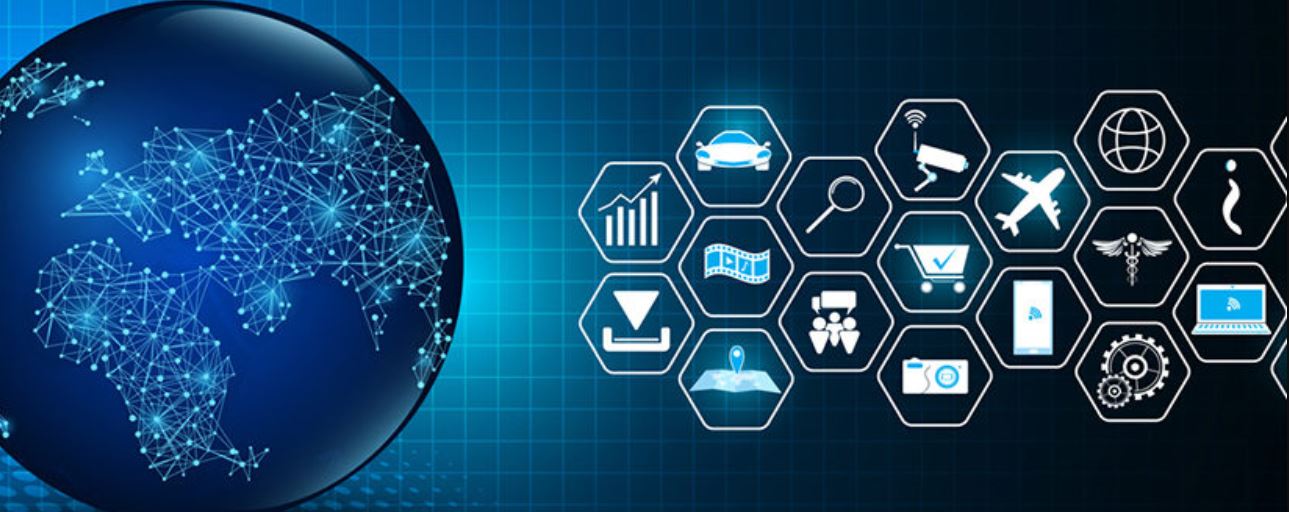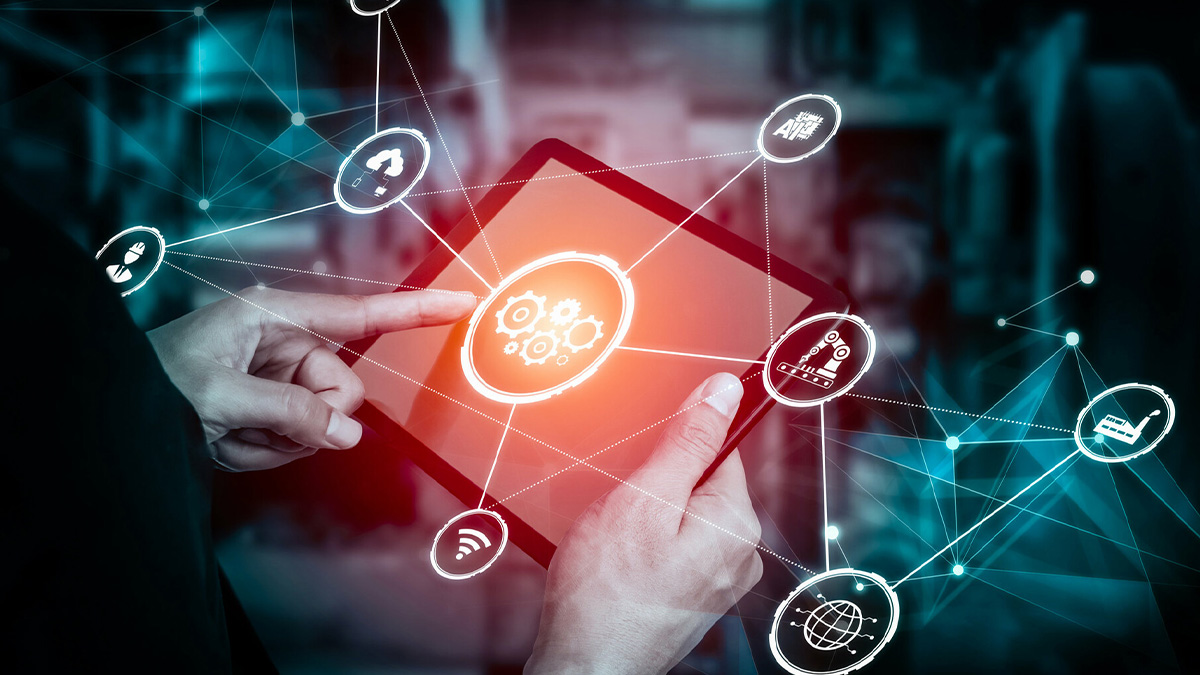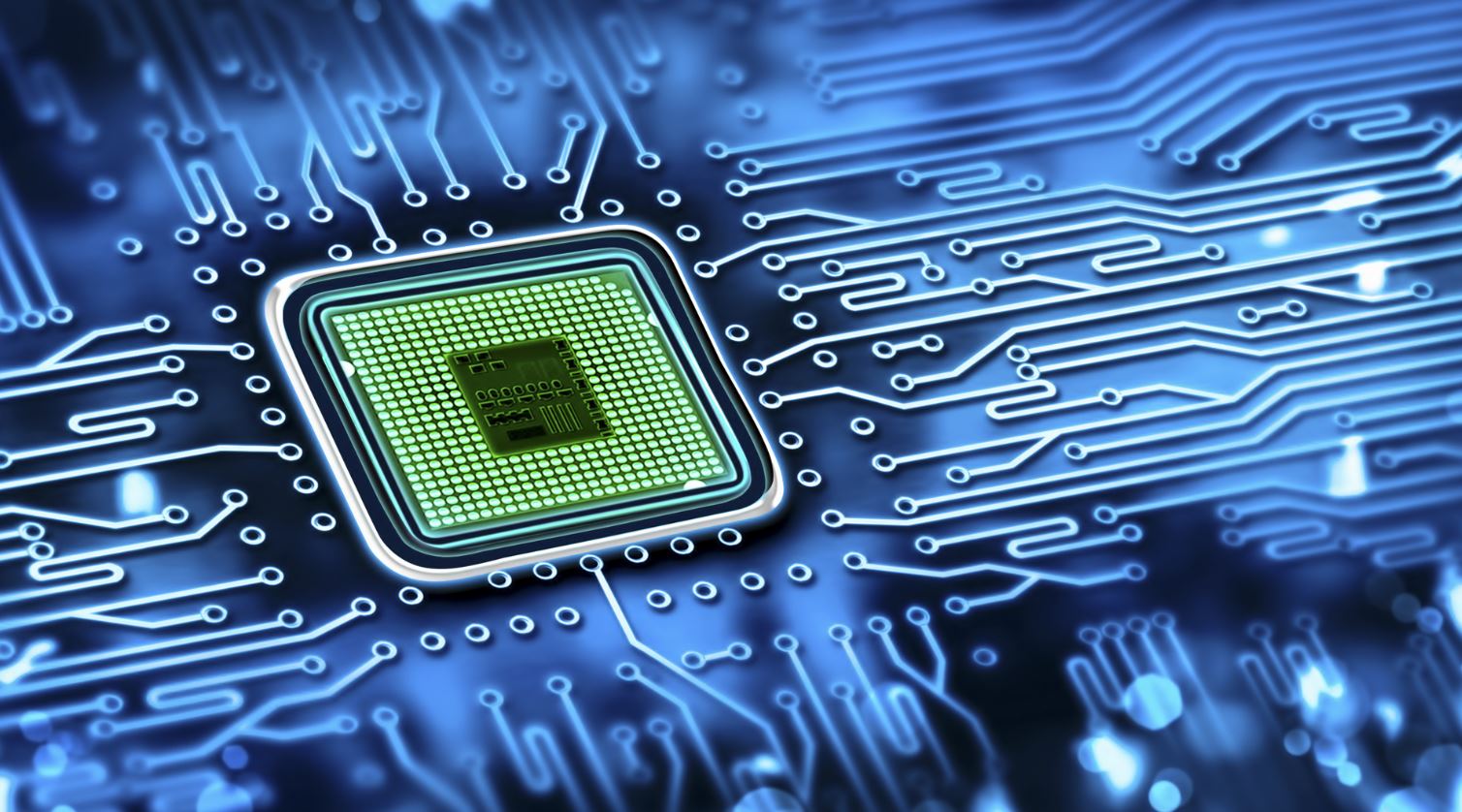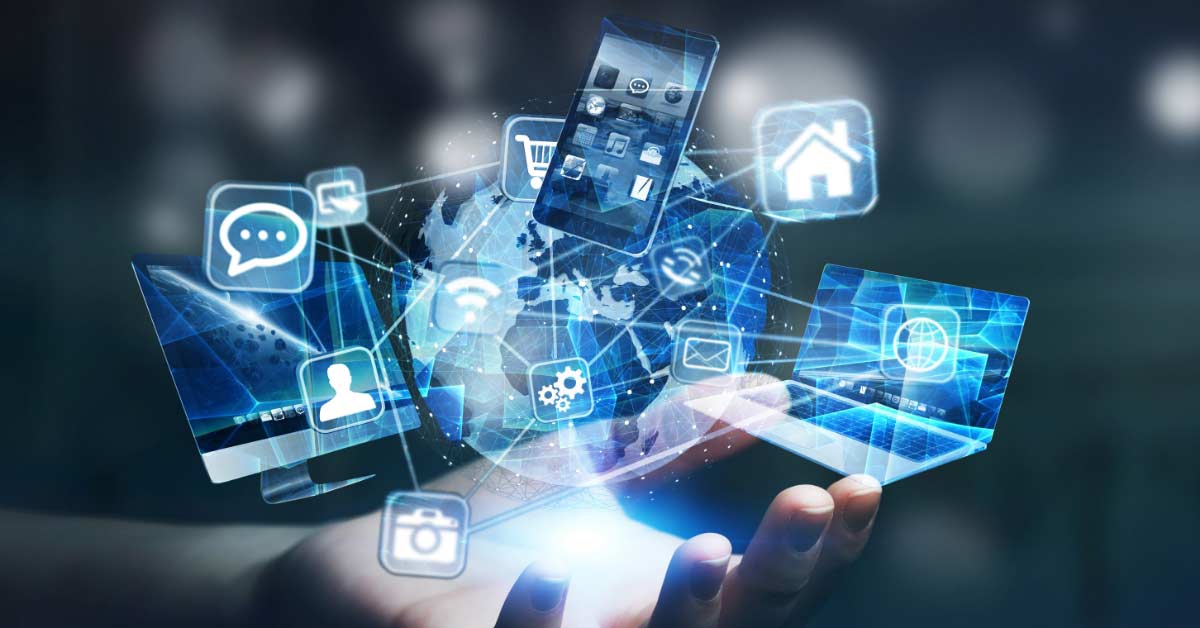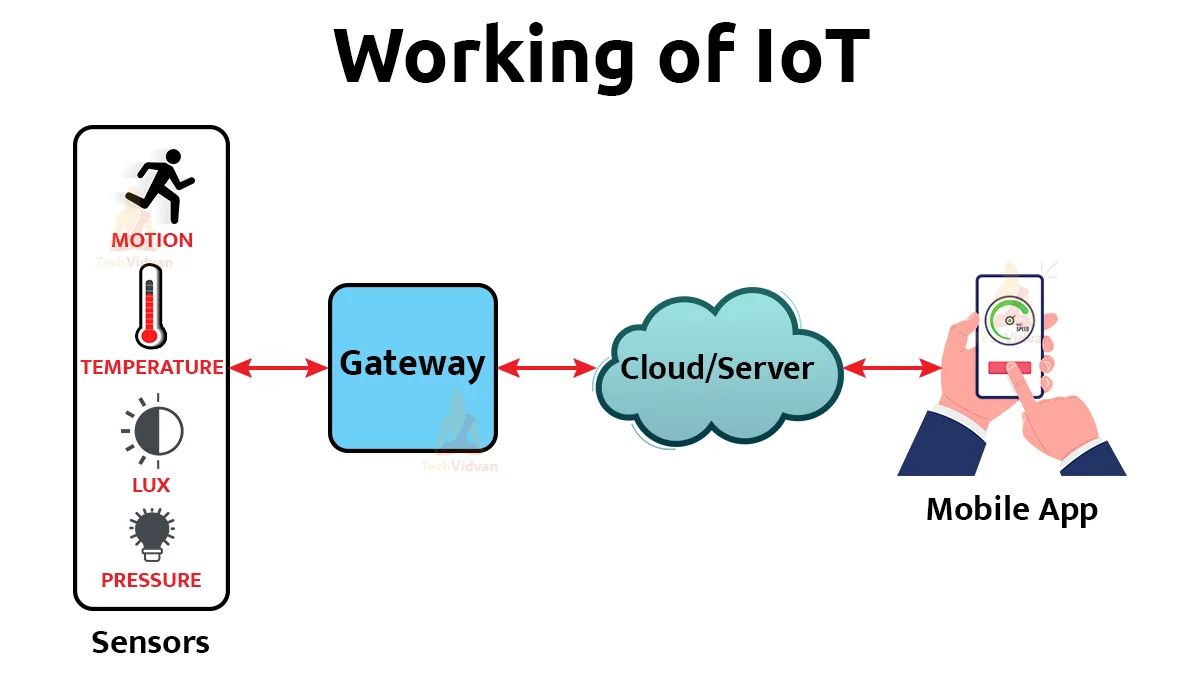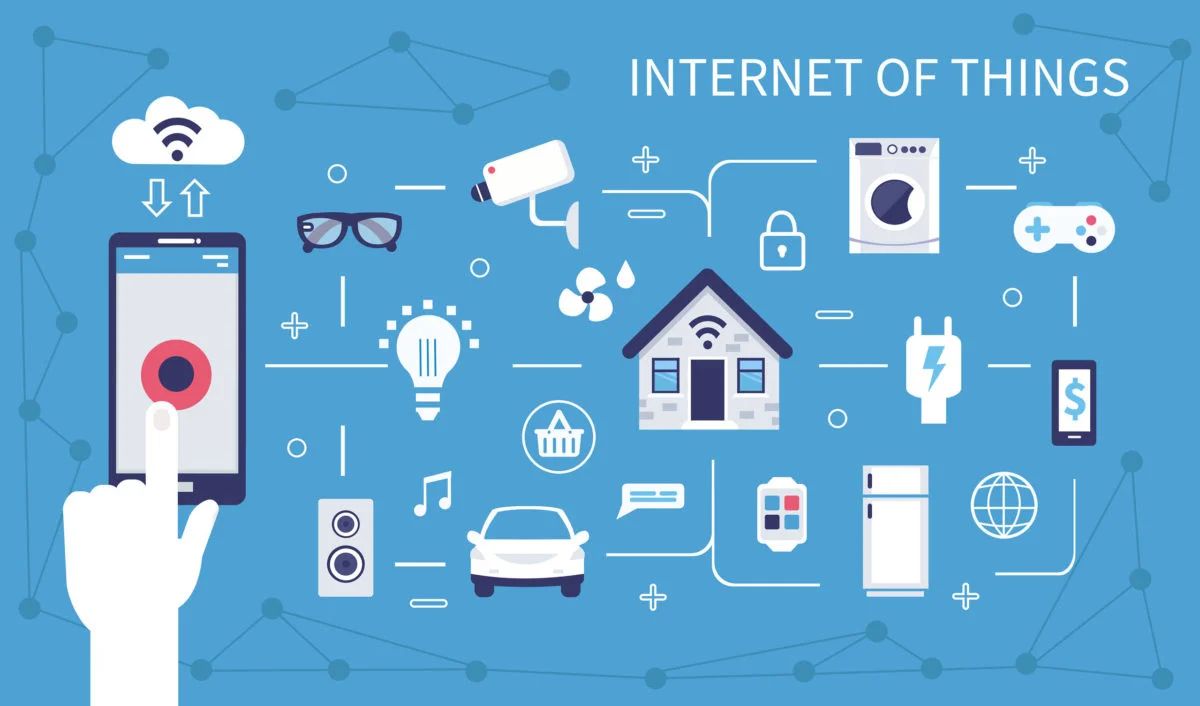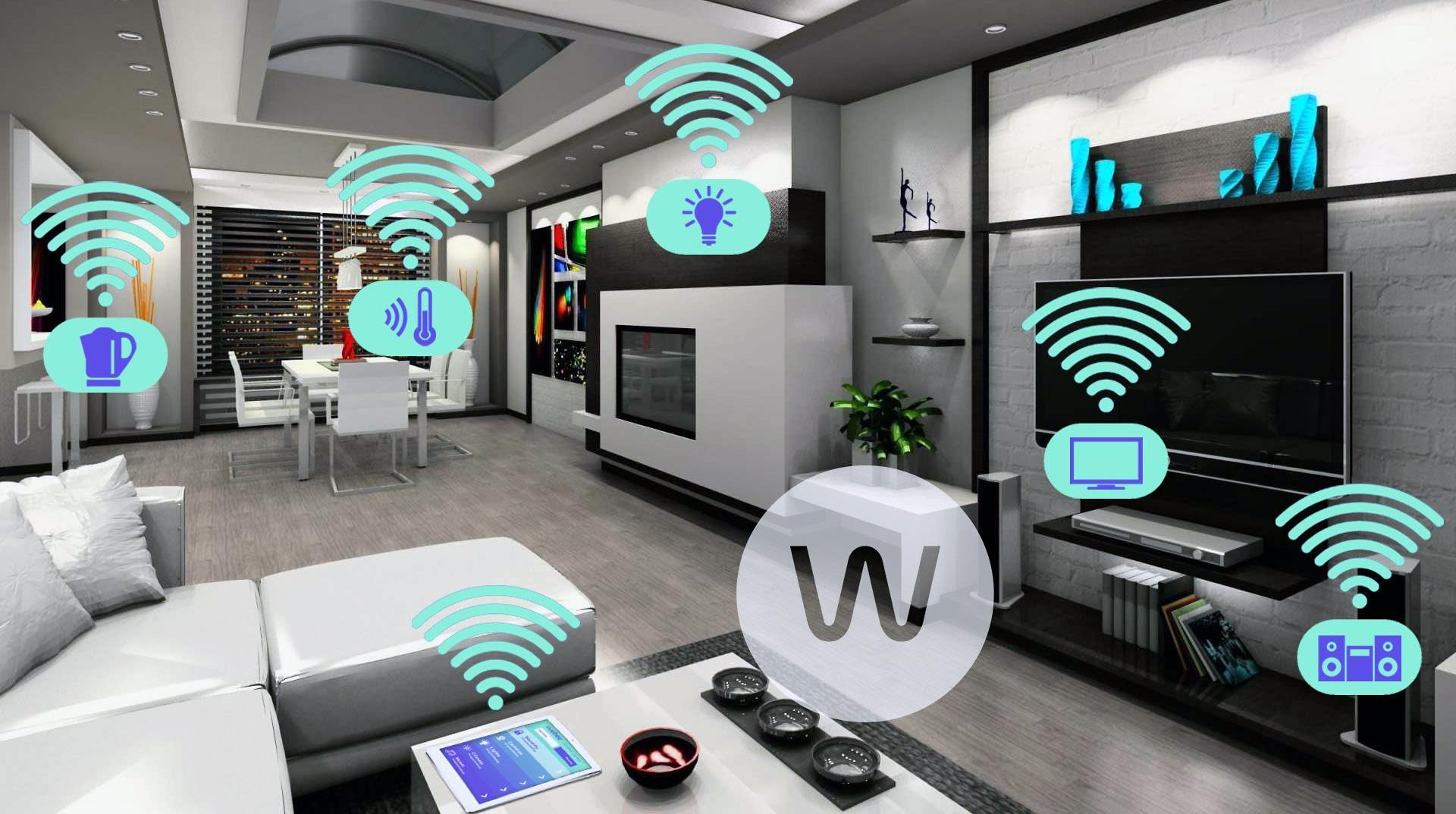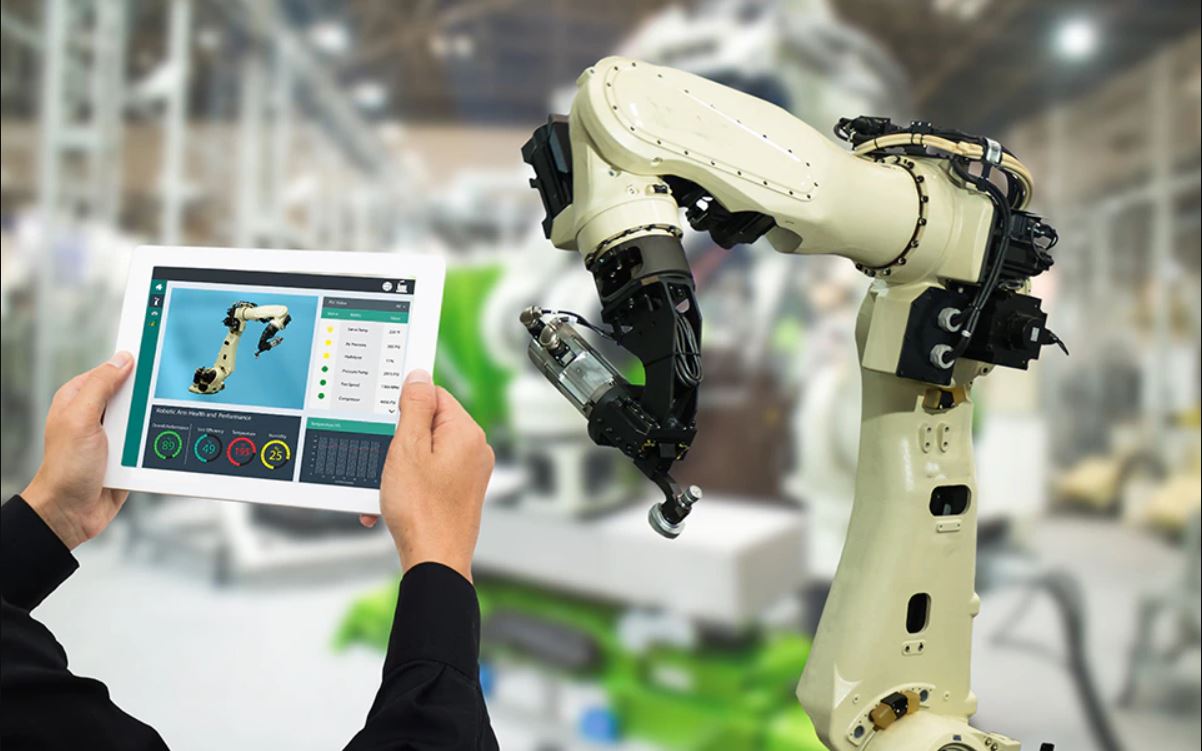Introduction
The Internet of Things (IoT) is a rapidly evolving technology that has the potential to revolutionize the way we live and work. It refers to a network of connected devices, sensors, and machines that can communicate and exchange data with each other over the internet. This interconnectedness allows for seamless integration and automation of various processes, improving efficiency, convenience, and productivity in numerous industries.
The concept of IoT was first coined in the late 1990s, but it has gained significant momentum in recent years, thanks to advancements in wireless connectivity, miniaturization of sensors, and the proliferation of smart devices. Today, IoT has become an integral part of our daily lives, from smart homes and wearable devices to industrial automation and healthcare systems.
The rapid growth of IoT technology stems from its ability to collect and analyze vast amounts of data in real-time. This data can then be used to make informed decisions, optimize operations, and enhance user experiences. From monitoring environmental conditions to automating manufacturing processes, IoT has the potential to transform industries and improve the quality of life for individuals around the world.
However, along with the promises of IoT come several challenges and concerns. Security is one of the primary concerns associated with IoT, as the increased number of interconnected devices creates a larger attack surface for hackers. Privacy is another critical aspect, as the massive amount of data collected by IoT devices raises questions about who has access to that data and how it is being used.
Despite these challenges, the future of IoT looks promising. With the advent of new technologies such as 5G, artificial intelligence, edge computing, and blockchain, IoT is expected to become even more powerful and transformative. These technologies will enable faster and more reliable data transfer, advanced analytics capabilities, enhanced security measures, and improved interoperability.
In this article, we will explore the future of IoT, discussing emerging trends and technologies that will shape its development. We will delve into the potential impact of 5G on IoT, the integration of artificial intelligence and machine learning, the role of edge computing, the use of blockchain, and the concept of smart cities. By understanding these advancements, we can gain insights into how IoT will continue to evolve and play a crucial role in our interconnected world.
Definition of IoT
The Internet of Things (IoT) refers to the network of physical objects or “things” that are embedded with sensors, software, and other technologies to connect and exchange data with each other and the internet. These objects can range from everyday devices such as smartphones, wearable devices, and home appliances to industrial equipment, vehicles, and even entire smart cities.
The fundamental concept behind IoT is the ability of these objects to collect and transmit data, as well as interact with their environment or other connected devices. Through the use of sensors, IoT devices can monitor and measure various parameters, including temperature, humidity, location, motion, and more. This data is then processed and analyzed to derive meaningful insights and trigger actions or responses.
What differentiates IoT from traditional internet-connected devices is its ability to enable communication and collaboration between physical objects without human intervention. This allows for the creation of smart and interconnected systems that can automate processes, optimize operations, and improve overall efficiency.
IoT is built upon a combination of technologies and components, including embedded systems, wireless communication protocols, cloud computing, and data analytics. These elements work together to enable the seamless flow of data between devices, their users, and the cloud, where it can be stored, processed, and accessed.
Key components of an IoT system include:
- Devices: These are the physical objects or “things” that are equipped with sensors and actuators. They collect and transmit data to the network.
- Connectivity: Wireless communication technologies, such as Wi-Fi, Bluetooth, Zigbee, or cellular networks, enable devices to connect to each other and the internet.
- Data Processing: IoT devices generate a massive amount of data. Cloud computing and edge computing technologies enable the processing, storage, and analysis of this data.
- Applications: Software applications and platforms are developed to enable users to interact with IoT devices, control their functionalities, and access the data they produce.
Overall, IoT is revolutionizing the way we interact with technology and the world around us. It holds the potential to transform industries, enhance quality of life, and drive innovation in countless areas, from healthcare and agriculture to transportation and energy management.
Brief History of IoT
The concept of IoT has been around for several decades, although its widespread adoption and growth have occurred more recently. The development of IoT can be traced back to the early days of the internet and the advancements in technology that have enabled the interconnectivity of devices.
In the 1980s and 1990s, the concept of connecting machines and devices to networks emerged. At the time, this connectivity was limited to large-scale systems like industrial equipment and government infrastructure. However, it laid the groundwork for the evolution of IoT.
The term “Internet of Things” was first coined by Kevin Ashton in 1999, who envisioned a world where objects could communicate with each other through the internet. Ashton’s vision was to bridge the gap between the digital and physical worlds by creating a network of interconnected devices that could exchange information and perform tasks without human intervention.
Throughout the 2000s, advancements in wireless communication technologies, miniaturization of sensors, and the proliferation of smartphones provided the building blocks for IoT. It became easier and more affordable to connect devices to the internet and collect data from the physical world.
In 2008, the number of devices connected to the internet exceeded the number of people on earth, marking a turning point in the evolution of IoT. This exponential growth in connected devices paved the way for the development of smart homes, wearable devices, and the integration of IoT in various industries.
The concept of smart homes, where household appliances and systems are connected and controlled through the internet, gained popularity in the early 2010s. IoT-enabled devices such as smart thermostats, home security systems, and voice assistants began to emerge, offering convenience, energy efficiency, and enhanced security to homeowners.
Industries also embraced IoT, leveraging its potential to improve efficiency and optimize operations. In agriculture, IoT sensors are used to monitor soil moisture levels, temperature, and humidity, enabling farmers to make data-driven decisions and optimize irrigation. In healthcare, IoT devices are used for remote patient monitoring, inventory management, and workflow optimization.
The growth of IoT has been further accelerated by the increasing accessibility and affordability of cloud computing and data analytics. These technologies provide the infrastructure necessary to process and analyze the massive amounts of data generated by IoT devices, enabling businesses and organizations to derive meaningful insights and make informed decisions.
Looking ahead, the history of IoT continues to be written. As technology advances and connectivity becomes even more pervasive, the possibilities for IoT are endless. From smart cities and autonomous vehicles to personalized healthcare and smart agriculture, IoT is set to transform industries and shape our future in numerous ways.
Current State of IoT
The current state of the Internet of Things (IoT) is marked by rapid growth and widespread adoption in various sectors. IoT has evolved from a concept to a reality, with billions of devices connected to the internet and seamlessly exchanging data. Here, we will explore the key aspects that define the current state of IoT.
1. Ubiquitous Connectivity: The proliferation of wireless communication technologies such as Wi-Fi, Bluetooth, and cellular networks has facilitated the seamless connectivity of IoT devices. This ubiquitous connectivity allows for real-time data transmission and enables devices to communicate with each other and with users.
2. Wide Range of Applications: The applications of IoT are vast and diverse. From consumer devices such as smart homes, wearables, and connected vehicles, to industrial applications like smart factories, supply chain management, and predictive maintenance, IoT is revolutionizing how we interact with technology and how businesses operate.
3. Data Collection and Analysis: IoT devices generate massive amounts of data through their sensors and actuators. This data is collected, processed, and analyzed to extract valuable insights that drive decision-making and optimize operations. Advanced analytics techniques, including machine learning and artificial intelligence, are increasingly being employed to make sense of the vast volumes of IoT-generated data.
4. Industry Adoption: IoT has gained significant traction across various industries. In manufacturing, IoT enables automation, remote monitoring, and predictive maintenance, leading to cost savings and improved productivity. In healthcare, IoT devices assist in remote patient monitoring, tracking medical assets, and optimizing healthcare service delivery. In agriculture, IoT helps monitor environmental conditions, track livestock, and automate irrigation systems.
5. Collaboration between Industry Players: The success and growth of IoT depend on collaboration between different stakeholders. Companies across sectors are partnering and forming consortiums to develop common standards, share resources, and drive innovation. This collaboration is fostering interoperability and driving the scalability of IoT solutions.
6. Consumer Adoption: IoT is increasingly becoming a part of everyday life for consumers. Smart home devices, wearable fitness trackers, and connected appliances are just a few examples. The convenience, energy efficiency, and enhanced user experiences offered by IoT devices are driving consumer adoption.
7. Security and Privacy Challenges: The rapid expansion of IoT brings forth challenges related to security and privacy. The interconnected nature of devices increases the attack surface for hackers, and the large-scale collection of personal data raises concerns about privacy. Addressing these challenges is essential to maintain trust in IoT systems.
The current state of IoT is characterized by its widespread adoption, diverse applications, and a continuous drive for innovation. As connectivity, data analytics, and security technologies advance, we can expect IoT to further evolve and transform industries, enhance our lives, and shape the future of technology.
Applications of IoT
The applications of the Internet of Things (IoT) span across various industries, revolutionizing how we live, work, and interact with technology. IoT technology has the potential to optimize processes, improve efficiency, and enhance user experiences. Here, we will explore some of the key applications of IoT across different sectors.
1. Smart Homes: IoT has transformed the way we manage our homes. From smart thermostats that adjust the temperature based on user preferences to connected security systems that provide remote monitoring and control, IoT-enabled devices offer convenience and energy efficiency. Smart appliances, lighting, and voice assistants further enhance the user experience, making homes more efficient and comfortable.
2. Industrial Automation: IoT is driving digital transformation in industries such as manufacturing, logistics, and supply chain management. Connected sensors and devices enable real-time monitoring of equipment, inventory tracking, predictive maintenance, and process optimization. By automating operations and streamlining workflows, IoT improves productivity, reduces downtime, and enhances overall efficiency.
3. Healthcare: IoT has the potential to revolutionize healthcare delivery. Remote patient monitoring devices enable healthcare professionals to monitor patients’ vital signs and health conditions remotely, reducing the need for frequent hospital visits. IoT-enabled medical devices can also track medication adherence, assist in rehabilitation, and enable telemedicine, providing accessible and personalized healthcare services.
4. Smart Cities: IoT plays a crucial role in building smart cities that are sustainable, efficient, and connected. IoT technology enables intelligent transportation systems that optimize traffic flow and reduce congestion. Smart energy grids help monitor and manage energy consumption. Public safety can be enhanced through connected surveillance systems, smart lighting, and predictive analytics. These applications of IoT create a safer, more sustainable and livable urban environment.
5. Agriculture: IoT is revolutionizing agriculture by enabling precision farming and smart agriculture practices. Through the use of sensors and actuators, IoT devices monitor soil moisture, temperature, humidity, and plant health, allowing farmers to optimize irrigation, fertilization, and pest control. This data-driven approach improves crop yield, reduces resource wastage, and promotes sustainable farming practices.
6. Environmental Monitoring: IoT devices are used for environmental monitoring and conservation efforts. Sensors placed in natural ecosystems track air and water quality, biodiversity, and climate patterns. This data helps researchers understand environmental changes, identify pollution sources, and develop conservation strategies to protect natural resources.
7. Retail and Supply Chain: IoT is transforming the retail industry by enabling smart inventory management, supply chain optimization, and personalized customer experiences. Retailers use IoT-enabled sensors to track inventory levels, monitor product quality, and automate ordering processes. Real-time data analytics provide insights into consumer behavior, enabling targeted marketing campaigns and improving customer satisfaction.
These are just a few examples of the diverse applications of IoT. From improving efficiency and productivity to enhancing user experiences and sustainability, IoT is reshaping industries and transforming the way we interact with technology. As IoT continues to evolve, we can expect to see even more innovative applications that revolutionize our world.
Challenges of IoT
While the Internet of Things (IoT) holds great promise for transforming industries and improving our lives, it also presents various challenges that need to be addressed for its widespread adoption and success. Here, we will explore some of the key challenges associated with IoT.
1. Security: As the number of interconnected devices grows, ensuring the security of IoT systems becomes paramount. The diverse range of devices, often with limited security features, increases the attack surface for hackers. Weak passwords, unencrypted communications, and insecure software can lead to unauthorized access, data breaches, and even physical harm. Robust security measures and encryption protocols must be implemented at all levels of IoT infrastructure to protect sensitive data and ensure the integrity of devices and networks.
2. Privacy: The vast amount of data collected by IoT devices raises concerns about privacy. Personal information, behavior patterns, and environmental data can be collected, analyzed, and potentially shared without the explicit consent of users. Protection of user privacy requires transparent data collection practices, informed consent, and strong data protection regulations.
3. Interoperability: IoT devices and systems often come from different manufacturers and operate on various communication protocols. Lack of interoperability can hinder the seamless integration and communication between devices, limiting their potential. Common standards and protocols must be established to ensure compatibility, interoperability, and a cohesive IoT ecosystem.
4. Scalability: IoT involves connecting billions of devices, and scaling up IoT infrastructure can be challenging. Supporting a large number of devices, managing massive amounts of data, and ensuring real-time responsiveness without network congestion present scalability issues. Robust and scalable networking infrastructure is required to accommodate the increasing number of devices and the associated data traffic.
5. Power Consumption: Many IoT devices are battery-powered or have limited power sources. Optimizing power consumption is crucial to extend device lifespan and ensure uninterrupted operation. The challenge lies in designing energy-efficient devices while maintaining their functionality and performance.
6. Data Management and Analytics: The sheer amount of data generated by IoT devices can overwhelm traditional data management and analytics systems. Efficient data storage, processing, and analysis techniques must be implemented to derive meaningful insights and timely actions. Advanced technologies such as edge computing and distributed data processing are being developed to address these challenges.
7. Ethical and Legal Considerations: As IoT technology becomes more pervasive, ethical and legal implications arise. Questions about data ownership, data usage rights, and liability in case of device malfunctions need to be addressed. Regulations and policies must be established to protect consumer rights and ensure responsible usage of IoT technology.
8. Skills and Workforce: The rapid growth of IoT demands a skilled workforce to develop, deploy, and maintain IoT systems. There is a shortage of professionals with expertise in IoT technologies, including hardware, software, security, and data analytics. Training programs and educational initiatives are needed to bridge this skills gap and foster IoT talent.
Addressing these challenges is crucial to unlocking the full potential of IoT and ensuring its successful adoption. Collaboration between industry stakeholders, government agencies, and regulatory bodies is essential to establish standards, improve security measures, and create an enabling environment for the growth of IoT.
Security Concerns in IoT
The rapid growth and widespread adoption of the Internet of Things (IoT) have brought about a multitude of benefits, but it has also raised significant security concerns. The interconnected nature of IoT devices and the vast amount of data they generate create vulnerabilities that can be exploited by malicious actors. Here, we will explore some of the key security concerns associated with IoT.
1. Device Vulnerabilities: IoT devices often have limited computational resources and may lack robust security features. This makes them susceptible to various types of attacks, including malware, data breaches, and unauthorized access. Device manufacturers need to prioritize security during the design and development phases, ensuring regular firmware updates and patches to address vulnerabilities.
2. Weak Authentication: Weak or default passwords are a common vulnerability in IoT devices. Many connected devices are shipped with default credentials, and users often fail to change them, leaving their devices exposed to exploitation. The use of strong, unique passwords and two-factor authentication is essential to bolster security in IoT systems.
3. Data Privacy: IoT devices collect vast amounts of personal and sensitive data, including user behavior patterns, location information, and health data. Unauthorized access, improper data handling, or insufficient encryption during data transmission can result in privacy breaches. Strict data protection regulations, transparent data handling practices, and encryption techniques are necessary to safeguard user privacy.
4. Network Security: The large number of interconnected devices in an IoT ecosystem increases the attack surface for hackers. Insecure network protocols, unencrypted communications, and inadequate security measures can compromise the entire network. Employing secure communication protocols such as Transport Layer Security (TLS) and using virtual private networks (VPNs) can enhance network security in IoT systems.
5. Supply Chain Attacks: IoT security can be compromised at any stage of the supply chain. Malicious actors can introduce tampered or counterfeit devices into the market, which can serve as entry points for attacks. Strict supply chain management practices, along with device authenticity verification mechanisms, are essential to mitigate the risk of supply chain attacks.
6. Lack of Standardization: The absence of common security standards across IoT devices and platforms poses a significant challenge. Each manufacturer may have different security protocols, making it difficult to ensure consistent security across an IoT ecosystem. Establishing industry-wide security standards and regulations is crucial to enhance security and interoperability in IoT systems.
7. Operational Challenges: Effective security requires regular updates, patch management, and monitoring of devices in an IoT system. However, the sheer scale of IoT deployments can make these operational tasks challenging. The lack of centralized management and the use of legacy systems can further impede security practices. Organizations must invest in robust security management systems to address these operational challenges.
Addressing the security concerns in IoT requires a concerted effort from device manufacturers, developers, end-users, and regulatory bodies. Collaboration, industry-wide standards, and robust security practices need to be enforced to ensure the integrity, privacy, and resilience of IoT systems.
Future Trends in IoT
The Internet of Things (IoT) is an ever-evolving technology, and its future holds exciting possibilities for innovation and transformation. As technology continues to advance, several key trends are expected to shape the future of IoT. Here, we will explore some of these trends.
1. Edge Computing: Edge computing, also known as fog computing, brings computation and data storage closer to the source of data generation, reducing latency and improving response times. With the exponential growth of IoT devices and the vast amount of data they generate, edge computing enables real-time analytics, faster decision-making, and reduced dependence on the cloud. It enhances the efficiency and scalability of IoT deployments, particularly in environments where low latency and real-time processing are critical.
2. 5G Connectivity: The rollout of 5G networks is set to revolutionize IoT. With significantly higher data transfer speeds, lower latency, and increased device capacity, 5G will unlock new possibilities for IoT applications. The enhanced connectivity and network responsiveness will enable seamless integration of IoT devices, supporting real-time data transmission and enabling mission-critical applications such as autonomous vehicles, remote surgery, and smart cities.
3. Artificial Intelligence (AI) and Machine Learning (ML): AI and ML will play a crucial role in the future development of IoT. The ability to analyze vast amounts of data in real-time and extract valuable insights will be essential for decision-making and automation. AI-powered IoT devices will be capable of learning user behavior, adapting to preferences, and providing personalized experiences. Additionally, AI and ML algorithms will be employed to detect anomalies, predict maintenance needs, and optimize processes in various industries.
4. Blockchain Integration: Blockchain technology has the potential to address several challenges in IoT, including security, privacy, and data integrity. By providing a decentralized and tamper-proof ledger, blockchain can secure transactions and data exchanges between IoT devices. It can also enhance trust and enable secure peer-to-peer interactions in IoT ecosystems. Smart contracts on the blockchain can automate and enforce agreements among devices, enabling seamless coordination and trustless interactions.
5. Sustainability and Environmental Monitoring: IoT can play a significant role in environmental conservation and sustainability efforts. IoT devices can monitor air and water quality, track energy consumption, and optimize resource usage. Smart cities equipped with sensors and interconnected infrastructure can promote sustainable transportation, waste management, and energy-efficient systems. The integration of IoT with renewable energy sources and smart grids will contribute to a more sustainable and eco-friendly future.
6. Enhanced Security Measures: With the increasing prevalence of cyber threats, security will remain a top priority in the future of IoT. Advances in encryption techniques, authentication protocols, and secure hardware modules will be crucial to protect IoT systems from malicious attacks. The use of artificial intelligence for threat detection, anomaly detection, and behavior analysis will strengthen IoT security further.
7. Data Governance and Privacy Regulations: As the importance of data privacy and security intensifies, governments and regulatory bodies will establish stricter data governance frameworks and privacy regulations. These regulations will enforce responsible data handling practices, ensure transparency, and provide individuals with more control over their personal data. Compliance with these regulations will be essential for organizations deploying IoT solutions.
The future of IoT is indeed exciting, with emerging trends paving the way for innovative and transformative applications. Edge computing, 5G connectivity, AI/ML integration, blockchain adoption, sustainability efforts, enhanced security measures, and robust data governance will shape the trajectory of IoT, driving its widespread adoption and creating a more connected and intelligent world.
Impact of 5G on IoT
The deployment of 5G networks is expected to have a tremendous impact on the Internet of Things (IoT), opening up new possibilities for connectivity, speed, and scalability. 5G’s enhanced capabilities will significantly influence the growth and development of IoT systems and applications. Here, we will explore the key impacts of 5G on IoT.
1. Faster Data Transfer Speeds: 5G networks offer significantly higher data transfer speeds compared to previous generations. This ultra-fast connectivity enables real-time data transmission for IoT devices, reducing latency and ensuring instantaneous responses. It facilitates seamless communication between interconnected devices, allowing for the efficient exchange of information and supporting time-sensitive applications.
2. Lower Latency: Latency refers to the delay between when data is sent and when it is received. 5G networks drastically reduce latency, providing near-instantaneous response times. This low-latency environment is crucial for IoT applications that require real-time or mission-critical operations, such as autonomous vehicles, remote control systems, and augmented reality. It ensures prompt action and enhances the overall user experience.
3. Increased Device Capacity: With 5G, a significantly larger number of devices can be connected to the network simultaneously. This increased device capacity is pivotal for IoT deployments where a massive number of interconnected devices, from sensors and wearables to industrial machinery, coexist. It allows for seamless connectivity, efficient data transmission, and improved network management without congestion or performance degradation.
4. Massive IoT: 5G offers support for massive machine-type communications (mMTC), allowing a vast number of low-power IoT devices to be connected to the network. This massive IoT capability enables the deployment of IoT solutions at an unprecedented scale. It facilitates smart city initiatives, where numerous sensors and devices are deployed for monitoring, traffic management, waste management, and more. It also enables the expansion of IoT applications in industries such as agriculture, healthcare, and logistics.
5. Enhanced Reliability: 5G networks provide greater reliability and stability, crucial for critical IoT applications that demand constant connectivity and uninterrupted service. The reliability of 5G ensures that IoT deployments are dependable, consistent, and resilient. This is especially important for applications such as remote patient monitoring, industrial automation, and smart grid management.
6. Network Slicing: 5G introduces the concept of network slicing, which allows the network to be divided into independent logical networks to cater to specific requirements. This capability enables IoT deployments to have dedicated network slices optimized for their specific needs, such as low-latency, high bandwidth, or low-power consumption. Network slicing ensures that different types of IoT applications can coexist on the same infrastructure while receiving the necessary network resources and performance.
7. New IoT Use Cases: The combination of 5G’s high speeds, low latency, and increased device capacity unlocks new possibilities for IoT applications. The seamless and instantaneous connectivity provided by 5G enables real-time control and monitoring of devices, making applications such as autonomous vehicles, smart grids, and industrial automation more viable. It also facilitates immersive experiences like augmented reality and virtual reality through low-latency streaming and responsive interactions.
The advent of 5G networks brings significant advancements to IoT, transforming the way devices connect, communicate, and exchange data. The increased speeds, reduced latency, enhanced device capacity, reliability, network slicing, and facilitation of new use cases position 5G as a game-changer for IoT, ushering in a new era of innovation and connectivity.
Artificial Intelligence and Machine Learning in IoT
The integration of Artificial Intelligence (AI) and Machine Learning (ML) technologies with the Internet of Things (IoT) is set to revolutionize the capabilities and potential of IoT systems. AI and ML empower IoT devices to gather, process, and analyze massive amounts of data, enabling intelligent decision-making, automation, and predictive capabilities. Here, we will explore the key impacts of AI and ML in the field of IoT.
1. Advanced Data Analytics: AI and ML algorithms enable sophisticated data analytics in IoT systems. With the ability to analyze vast volumes of sensor data in real-time, AI algorithms can detect patterns, anomalies, and correlations that may not be apparent to human operators. This allows for data-driven decision-making, predictive maintenance, and optimization of processes.
2. Real-time Insights: AI and ML enable IoT devices to generate real-time insights from data. The combination of fast processing power and intelligent algorithms enables devices to analyze data on the edge or in the cloud, making near-instantaneous decisions and providing actionable insights. Real-time insights are critical for applications such as autonomous vehicles, smart grids, and remote patient monitoring.
3. Predictive Maintenance: One of the significant benefits of AI and ML in IoT is the ability to predict and prevent failures before they occur. By analyzing historical data and tracking real-time conditions, AI algorithms can identify patterns and indicators of potential issues. This facilitates proactive maintenance, reducing downtime, and optimizing the lifespan of IoT-enabled equipment and infrastructure.
4. Adaptive and Autonomous Systems: AI and ML enable IoT systems to adapt to changing circumstances and optimize performance. Machine learning algorithms can continuously learn from data and adjust device settings, schedules, and operations accordingly. This enables IoT systems to operate autonomously, making real-time adjustments based on the analysis of data, environmental conditions, and user preferences.
5. Enhanced Security: AI and ML technologies play a crucial role in strengthening the security of IoT systems. By employing anomaly detection and behavior analysis, AI algorithms can identify and mitigate potential security breaches or cyber-attacks. Machine learning algorithms can continuously learn from new threats and update security protocols, improving the resilience and defense mechanisms of IoT devices and networks.
6. Personalization and User Experience: AI and ML enable personalized experiences in IoT systems. By analyzing user data, preferences, and behavior patterns, IoT devices can deliver customized services, recommendations, and interactions. This enhances the overall user experience and tailors IoT offerings to specific individual needs and preferences.
7. Edge Computing and AI: The combination of AI and edge computing in IoT brings intelligence closer to the source of data generation. AI algorithms can be deployed directly on IoT devices or edge servers, enabling faster response times, reduced latency, and enhanced privacy. Edge computing and AI work in tandem to process data locally, minimizing the need for cloud resources and ensuring efficient utilization of network bandwidth.
The integration of AI and ML with IoT paves the way for transformative applications and advancements. From advanced data analytics and real-time insights to predictive maintenance, adaptive systems, enhanced security, personalized experiences, and edge computing, AI and ML technologies are poised to drive the evolution of IoT, making it smarter, more efficient, and more responsive to human needs.
Edge Computing in IoT
Edge computing is a paradigm in IoT that brings data processing and computation closer to the edge of the network, near the source of data generation. By deploying computing resources at the edge, edge computing enables real-time data analysis, reduces latency, and enhances the overall efficiency and performance of IoT systems. Here, we will explore the key aspects and benefits of edge computing in IoT.
1. Reduced Latency: One of the primary advantages of edge computing in IoT is the significant reduction in latency. By processing data locally at the edge devices or edge servers, the need for data transmission to centralized cloud servers is minimized. This reduces the time it takes for data to travel back and forth, enabling near real-time response and improving the overall user experience. Applications such as autonomous vehicles, industrial automation, and remote monitoring can greatly benefit from reduced latency.
2. Enhanced Responsiveness: Edge computing empowers IoT systems to respond quickly to events and make decisions in real-time. By analyzing data at the edge, devices can take immediate action based on the context, without relying on a distant cloud server. This agility enables faster reaction times, enables autonomous decision-making, and ensures that critical operations are executed promptly. For time-sensitive applications such as self-driving cars or real-time monitoring of healthcare patients, instant responsiveness is paramount.
3. Bandwidth Optimization: The massive amount of data generated by IoT devices can put a strain on network bandwidth when transmitted to the cloud for processing. By performing computation and analysis at the edge, edge computing helps alleviate this issue by reducing data transmission requirements. Only relevant or summarized data is transmitted to the cloud, which optimizes bandwidth utilization and reduces associated costs.
4. Data Privacy and Security: Edge computing addresses concerns related to data privacy and security in IoT systems. By keeping sensitive data local to the edge devices or servers, the need for transmitting data to a remote cloud server is minimized, reducing the potential exposure to security risks. This localized approach ensures that sensitive data remains within the premises or under the control of the device owner, enhancing privacy and mitigating risks associated with data transmission.
5. Offline Operation: Edge computing enables IoT devices to continue operating even in environments with limited or intermittent internet connectivity. By processing data at the edge, devices can perform essential operations or make critical decisions locally, regardless of network availability. This offline capability ensures uninterrupted functionality and enables IoT devices to be deployed in remote locations where consistent connectivity may not be available.
6. Scalability and Network Efficiency: Edge computing allows for distributed computing resources at the edge devices rather than relying on a centralized cloud infrastructure. This distributed approach enables IoT systems to scale more efficiently, as the processing and storage capabilities are distributed across multiple edge devices. It also reduces the load on the network, as data processing and analysis are performed closer to the point of data generation.
7. Cost Optimization: Edge computing can help reduce costs associated with IoT deployments. By minimizing the need for data transmission and storage in the cloud, edge computing reduces the reliance on expensive cloud services. Additionally, the ability to process and filter data at the edge reduces the need for high-performance, cloud-based infrastructure, resulting in cost savings for IoT implementations.
Edge computing is revolutionizing IoT by enabling real-time analysis, reducing latency, enhancing security, and optimizing bandwidth utilization. With its capability to support time-sensitive applications, ensure data privacy, and enhance overall system performance, edge computing plays a crucial role in enabling the seamless integration of IoT into various domains.
Blockchain and IoT
Blockchain technology has the potential to revolutionize the Internet of Things (IoT) by addressing critical challenges such as security, data integrity, and trust. Blockchain, often associated with cryptocurrencies like Bitcoin, is a decentralized and immutable ledger that enables transparent and secure transactions between multiple parties without the need for intermediaries. Here, we will explore the key aspects and benefits of integrating blockchain with IoT.
1. Security and Trust: Blockchain provides enhanced security and trust in IoT deployments. By utilizing cryptographic algorithms and decentralized consensus mechanisms, blockchain ensures that the data recorded on the ledger cannot be tampered with or manipulated. This integrity and immutability of data make it highly secure and trustworthy for IoT applications where data integrity is critical, such as supply chain management, asset tracking, and smart contracts.
2. Data Integrity: IoT generates vast amounts of data, and ensuring the integrity of that data is essential. Blockchain provides an auditable and transparent record of all transactions and data exchanges, making it ideal for verifying the authenticity and accuracy of IoT-generated data. This ensures that data from IoT devices is reliable, immutable, and tamper-proof, enabling stakeholders to trust and confidently use the data for critical decision-making processes.
3. Decentralization and Interoperability: Blockchain technology facilitates decentralized IoT systems by eliminating the need for a central authority or intermediary. This decentralization enables direct peer-to-peer communication and transactions between IoT devices and systems, improving interoperability and reducing dependence on a single entity. Blockchain-based smart contracts can automate and enforce agreements between different IoT devices, ensuring seamless coordination and trustless interactions.
4. Secure Device Identity and Authentication: Blockchain can enhance device identity and authentication in IoT ecosystems. Each IoT device can have a unique digital identity stored on the blockchain, providing a secure and tamper-proof way to authenticate and authorize device interactions. This eliminates the risk of unauthorized access, impersonation, and the use of counterfeit devices, enhancing security in IoT deployments.
5. Data Marketplaces and Monetization: Blockchain enables secure data marketplaces in IoT ecosystems. IoT devices generate valuable data, and blockchain-based platforms can facilitate direct data transactions between device owners, data consumers, and other stakeholders. Smart contracts on the blockchain ensure transparent and fair data exchange, allowing IoT device owners to monetize their data while maintaining ownership and control over their information.
6. Scalability and Efficiency: Blockchain technology is continuously evolving to address its scalability limitations, enabling greater adoption in IoT. Layer 2 solutions, such as off-chain transactions and sidechains, enhance scalability by reducing the load on the main blockchain. These solutions enable faster and more efficient transactions, making blockchain technology more viable for low-power IoT devices and high-throughput applications.
7. Supply Chain Management: Blockchain can revolutionize supply chain management by ensuring transparency, traceability, and authenticity of goods and transactions. Each step of the supply chain can be recorded on the blockchain, providing an immutable audit trail and verifying the origin, quality, and ownership of products. This transparency and trust enable efficient supply chain processes, reduce fraud, and enhance consumer confidence in the authenticity of products.
Integrating blockchain with IoT unlocks a world of possibilities by enhancing security, data integrity, trust, and transparency. By combining the decentralized nature of blockchain with the interconnectedness of IoT, we can create a secure and trustworthy ecosystem that drives innovation, streamlines processes, and transforms industries.
Smart Cities and IoT
The integration of Internet of Things (IoT) technology in urban environments has led to the concept of smart cities. Smart cities leverage IoT devices, sensors, and data analytics to efficiently manage resources, improve the quality of life for residents, and enhance sustainability. Here, we will explore the key aspects and benefits of smart cities powered by IoT.
1. Efficient Resource Management: IoT enables real-time monitoring and control of critical resources in a city, such as energy, water, and waste management. Smart grids optimize the distribution and consumption of energy, reducing costs and ensuring a reliable supply. Water management systems monitor usage, detect leaks, and optimize irrigation, conserving water resources. Intelligent waste management systems optimize collection routes, reduce waste, and enhance recycling efforts, leading to more efficient use of resources.
2. Improved Mobility and Transportation: IoT-powered smart cities revolutionize transportation and mobility. Connected systems, including intelligent traffic management, parking sensors, and public transportation tracking, optimize traffic flow, reduce congestion, and enhance the overall transportation experience for residents. IoT devices in vehicles and infrastructure enable real-time monitoring and analysis, providing valuable data for traffic planning, routing optimization, and autonomous vehicle implementation.
3. Enhanced Public Safety: IoT devices play a crucial role in enhancing public safety in smart cities. Surveillance cameras connected to the IoT network enable real-time monitoring of public spaces, enhancing security and deterring crime. IoT sensors can detect environmental conditions, such as air quality and noise levels, ensuring a healthier and safer urban environment. Emergency response systems can be improved with IoT-enabled devices that provide real-time data, enabling faster and more efficient emergency services.
4. Sustainable Infrastructure: Smart cities prioritize sustainability and environmental responsibility. IoT devices monitor and control energy consumption in public buildings, streetlights, and infrastructure, optimizing energy usage and reducing carbon emissions. Connected systems for waste management, water usage, and environmental monitoring enable data-driven decisions and promote sustainable practices. By leveraging IoT technology, smart cities aim to reduce their ecological footprint and build a greener and more sustainable future.
5. Citizen Engagement and Participation: IoT enables citizens to actively participate in shaping their cities. Connected platforms and mobile applications provide real-time information about city services, events, and community initiatives. Citizens can provide feedback, report issues, and actively engage in the decision-making process. By facilitating citizen participation, smart cities foster a sense of community ownership, collaboration, and empowerment.
6. Data-Driven Decision Making: IoT-generated data in smart cities provides valuable insights for decision-making processes. Real-time data on traffic patterns, energy consumption, waste management, and environmental conditions enables city officials to make informed decisions and allocate resources effectively. Data analytics and machine learning algorithms process and analyze vast amounts of data, identifying trends, patterns, and optimizing urban services.
7. Improving Quality of Life: Overall, smart cities powered by IoT strive to improve the quality of life for their residents. Seamless connectivity, efficient resource management, enhanced mobility, and sustainable practices create a more livable and inclusive urban environment. By leveraging IoT technology, smart cities aim to deliver personalized services, improve accessibility, and provide a better overall experience for their citizens.
Smart cities represent the future of urban living, leveraging IoT technology to optimize resources, enhance sustainability, and improve the lives of residents. The integration of IoT in cities brings efficiency, data-driven decision-making, and citizen empowerment, propelling cities towards a more connected, sustainable, and prosperous future.
Conclusion
The Internet of Things (IoT) continues to shape the way we live, work, and interact with technology. From smart homes and industrial automation to healthcare systems and transportation, IoT is driving innovation and transforming industries. As IoT evolves, several key trends emerge, shaping its future development.
Advancements such as 5G connectivity, artificial intelligence (AI), edge computing, and blockchain integration are set to revolutionize IoT. 5G networks will provide faster data transfer speeds, lower latency, and increased device capacity, paving the way for real-time applications and massive IoT deployments. AI and machine learning enable advanced data analytics, automation, and adaptive systems in IoT, unlocking new possibilities for efficiency and personalization.
Edge computing brings data processing closer to the source, reducing latency, enhancing responsiveness, and improving resource utilization. Blockchain technology enhances security, data integrity, and trust in IoT systems, enabling transparent and secure transactions without intermediaries.
IoT applications span various domains, from smart homes and industrial automation to healthcare, agriculture, and smart cities. IoT enables efficient resource management, improved mobility and transportation, and enhanced public safety. IoT-driven smart cities prioritize sustainability, citizen engagement, and data-driven decision-making, enhancing the quality of life for residents and building a more connected and inclusive urban environment.
However, IoT also faces challenges. Security and privacy concerns must be addressed to establish trust in IoT systems. Interoperability, scalability, and power consumption remain areas that require further development. Collaboration between stakeholders, including industry players, regulatory bodies, and academia, is key to addressing these challenges and driving the adoption of IoT technology.
As we look to the future, the potential of IoT is immense. With the continued integration of advanced technologies and the rise of smart applications, IoT will continue to transform industries, optimize processes, and improve our daily lives. By harnessing the power of IoT, we can build a more connected, efficient, and sustainable world.







